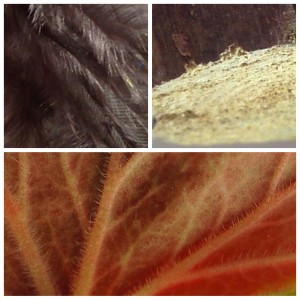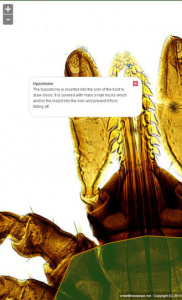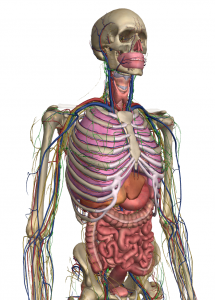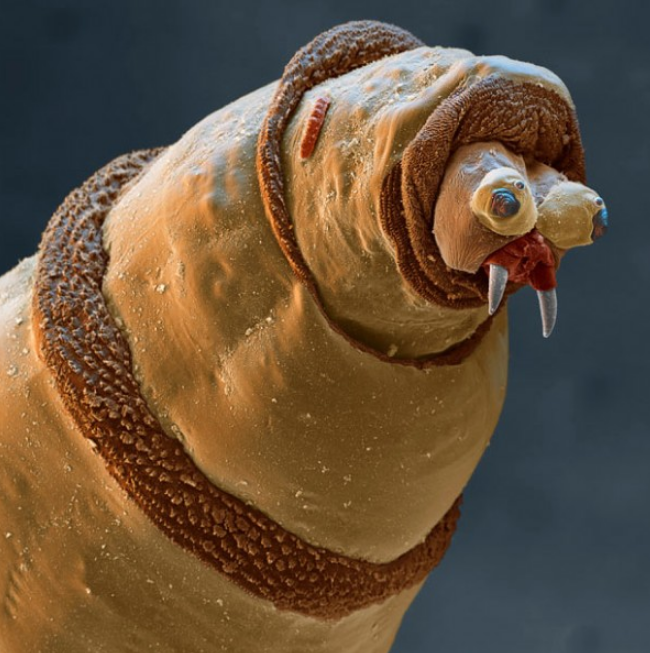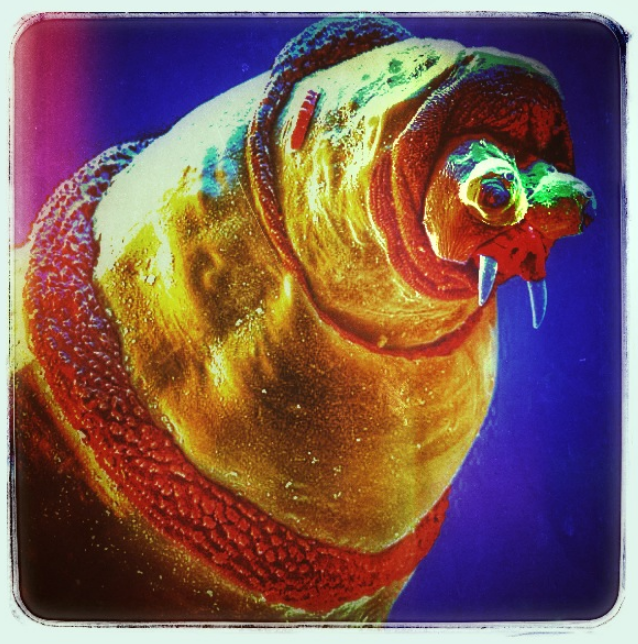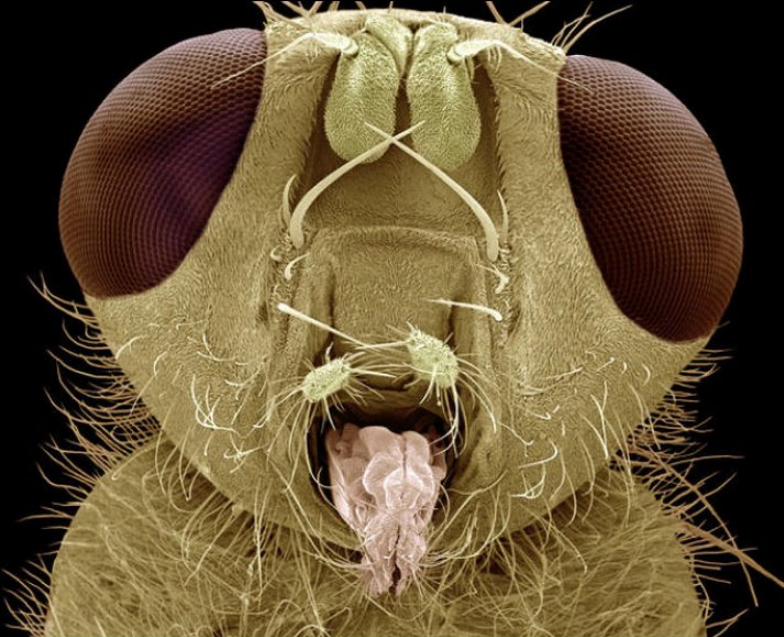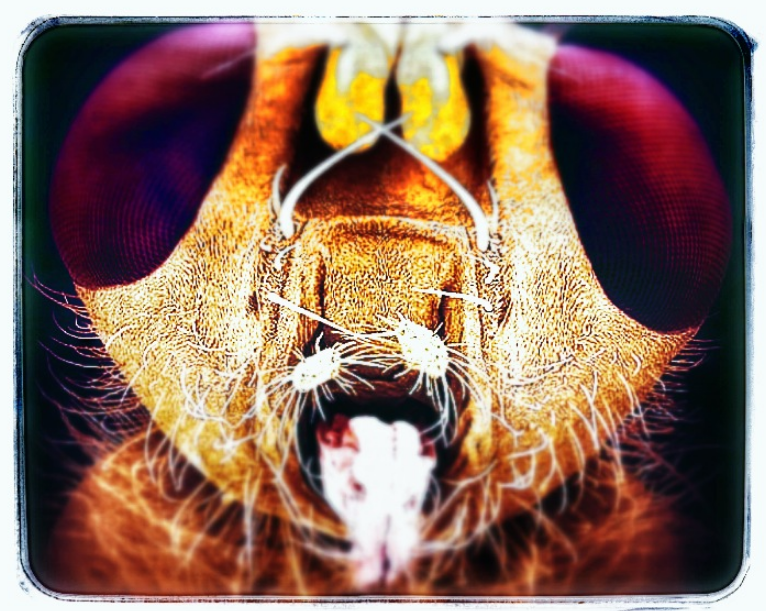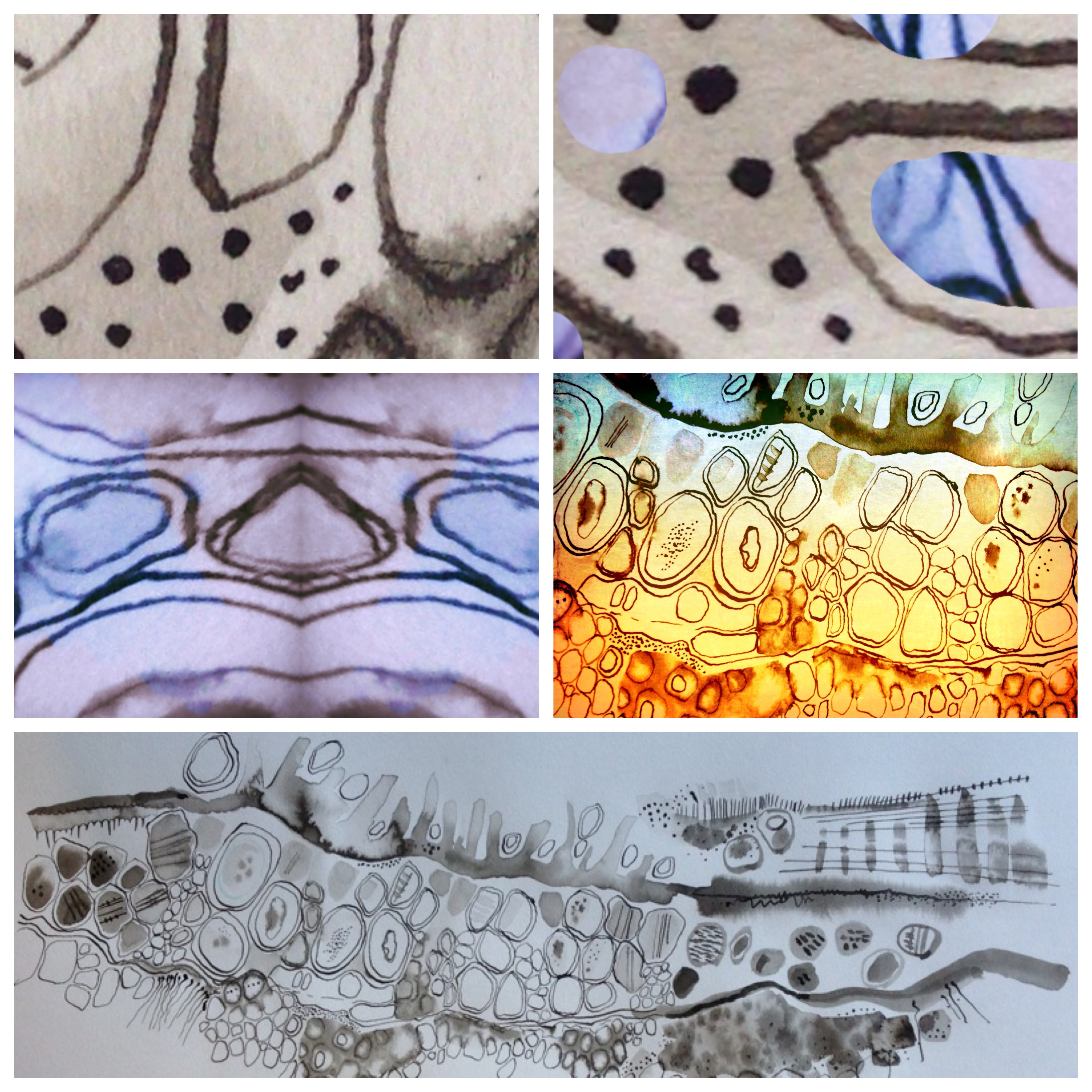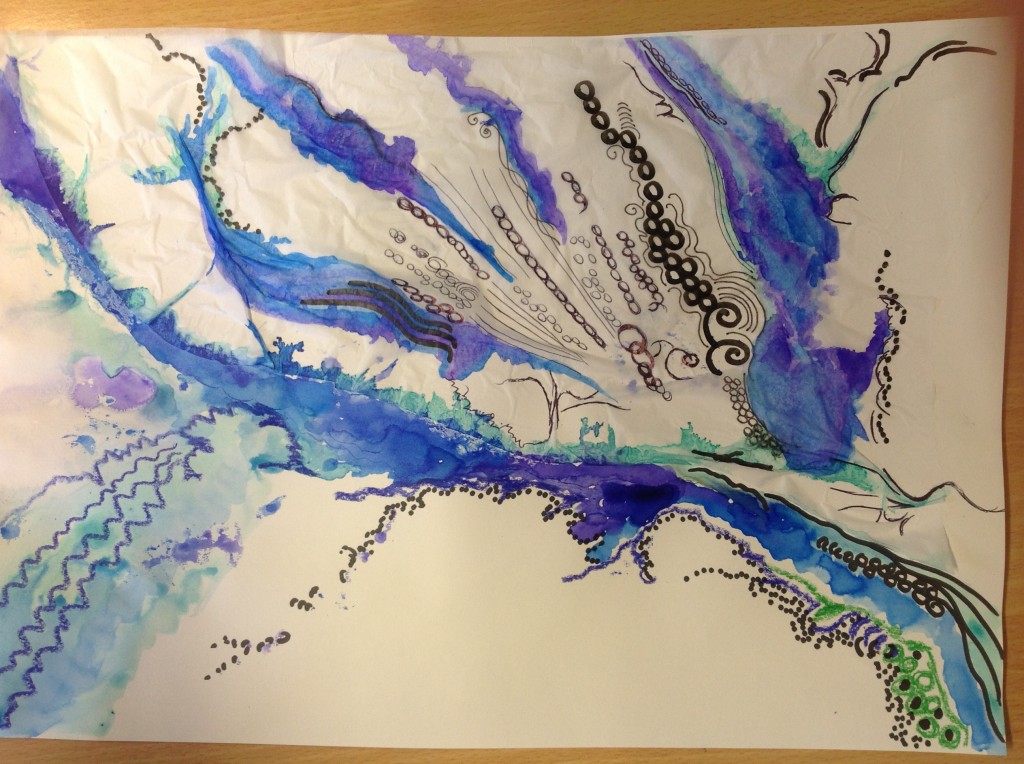Our theme on May 12th 2014 was exploring science and art beginning with microscopic images as a stimulus.
We captured and manipulated close up and microscopic images, beginning with some digital images and thinking about ways of enhancing them with physical art techniques such as pen and ink drawing, ink washes and marbling.
We looked at the Proscope digital microscope for iPads and and the Easi-Scope handheld digital microscope:

If you have an iPad you could begin by using some magnification apps. You will need to improvise a stand to hold the iPad still and take screenshots:
Taru Magnifier Up to 10x magnification (iOS free)
Big Magnify Up to 8x magnification (iOS free) Here are some examples (a feather, a small piece of wood and a leaf) taken with this app:
64x Magnify HD (iOS free) Up to 4x magnification in the free version with a useful camera function.
Or you could look at some ready made images. Smart Microscope Lite is a virtual mobile microscope with 5 free slides of plants and specimens to zoom in and out of with your fingers (iOS free. Full version with 70 slides £1.99)
On the web there is Zygote Body which lets you zoom around and manipulate a 3D anatomical model of the human body: think of Google Earth only for the body!
You can find some excellent images simply by googling ‘microcsopic images’. Then refine your search to look at categories such as ‘everyday objects’ or ‘the human body’. Some of these could inspire a ‘Microscope Mystery’ quiz similar to this one on the Fuzzy Science website. Check out their close up image of iPhone earbuds!
Jean Edwards has been collecting some interesting images on Pinterest. Make sure to have a look at the cat’s tongue and the amazing grains of sand!
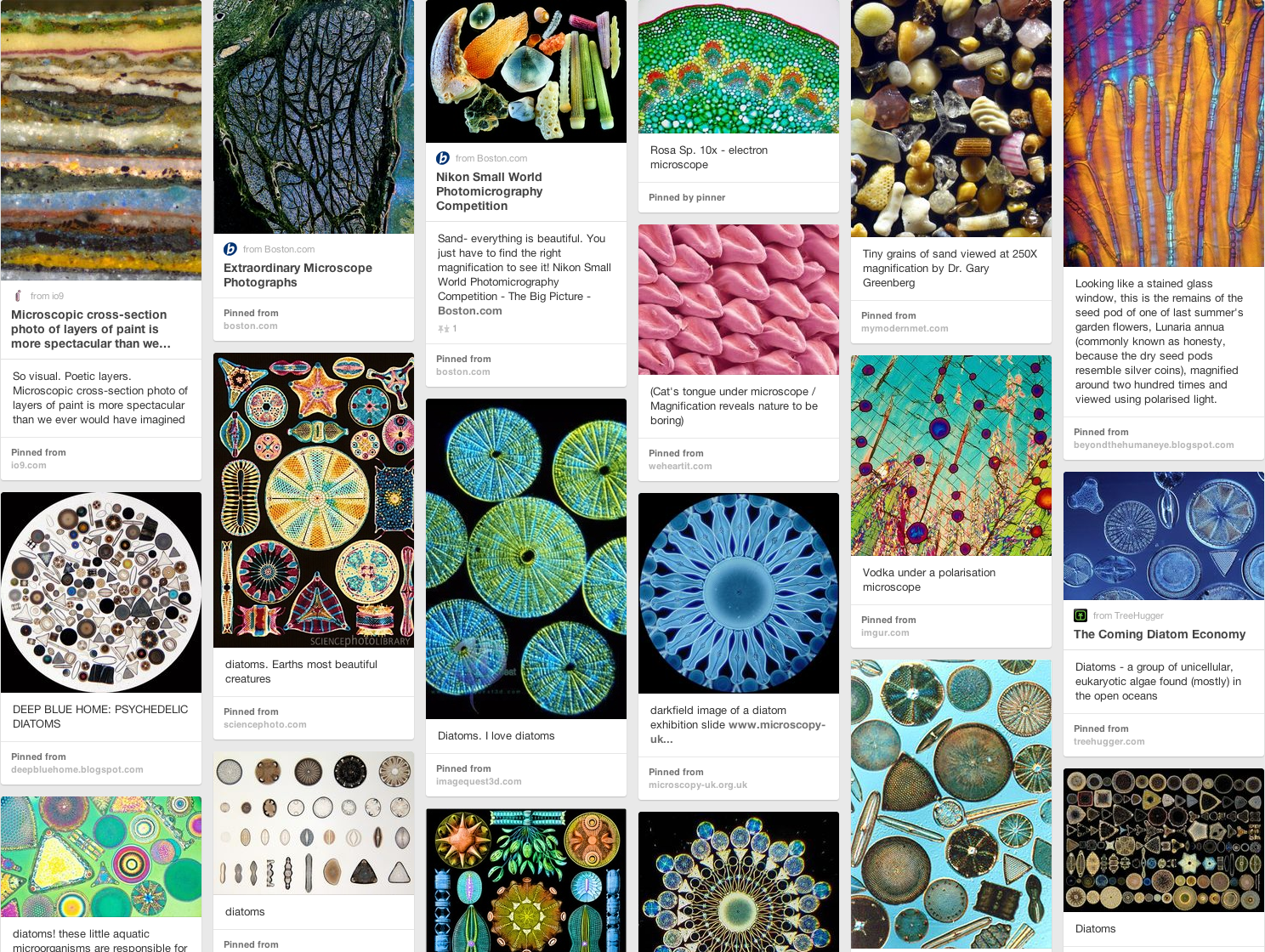 You can also find good microscopic images on these sites:
You can also find good microscopic images on these sites:
Oliver Meckes – photos – www.sciencephoto.com
Small World Image Gallery – www.microscopyu.com
Olympus Bioscapes – www.olympusbioscapes.com
25 everyday objects under a electron microscope
35 everyday things made insanely cool under a microscope
Photos of the amazing and gruesome world under a microscope
Once you have captured or chosen an image you could consider manipulating it digitally with the Snapseed app (free), the Be Funky app (free) or the Be Funky online photo editor to inspire creative writing and presenting. Here are some before and after photos of a maggot and a fly’s head:
Image source: www.danoah.com/35-everyday-things-made-so-insanely-cool-under-a-microscope
Another idea is to annotate the image and make it interactive by adding text, images, videos or sounds using the Thinklink app or Thinglink online. Hover over these images to see what you can achieve:
Illustrating Science is a House of Illustration project funded by the Wellcome Trust linking science & illustration in the primary classroom. Key Stage 2 children explored ways of communicating scientific processes in visually effective ways. The aim was to promote the interdependence between science and art through the use of illustration and technology to record, explain and communicate ideas. Six classes experienced hands-on science alongside drawing, animation and collage skills, and then came up with their own illustrated science resources. They found out more about the real worlds of science and art, and learned how to communicate complex processes in visually effective ways. In this amazing video children from Torriano School in Camden animate the journey of blood:
At the meeting we used a combination of digital and practical approaches including looking at images to inspire drawing with inks, photographing the images and manipulating them using apps (Moldiv, Distressed FX and Reflection). I have continued to participate in the digital swap circle – you can see the images here – sketchbook circle digital swap
When considering artists’ work I was reminded that we refer back the work of scientists making drawings in the early twentieth century such as Ernst Haeckel and Robert Hooke as well Wilson Bentley’s early close-ups of snowflakes.
We would love to document and share your classroom work on related themes. Please email helen.caldwell@northampton.ac.uk if you have a contribution.

